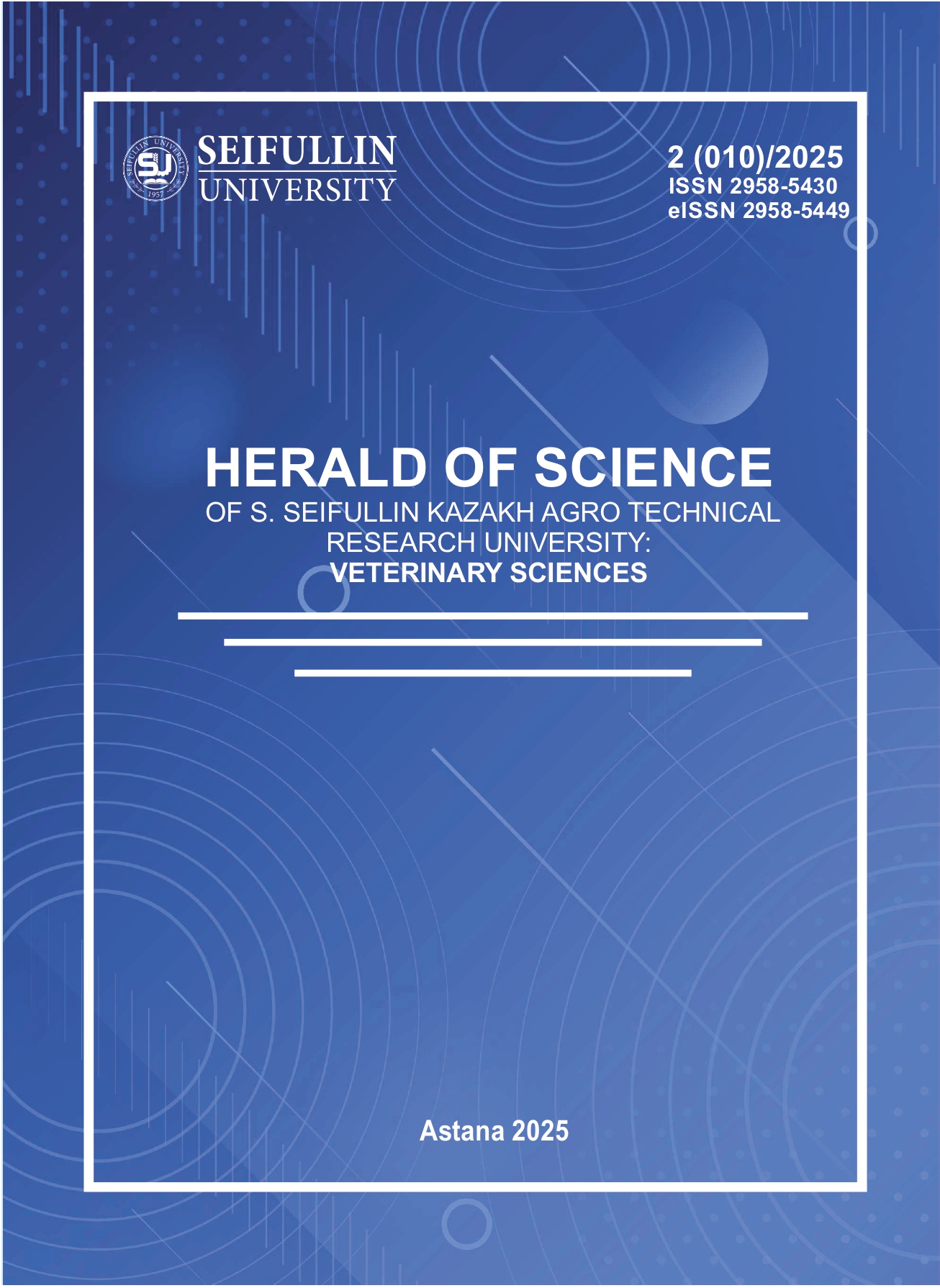Bacteriological monitoring of infectious epididymitis of rams
Bacteriological monitoring of infectious epididymitis of rams
DOI:
https://doi.org/10.51452/kazatuvc.2025.2(010).1878Keywords:
B.ovis; bacteriological study; biosafety; brucella culture; incidence; strain.Abstract
Background and Aim. Currently, infectious epididymitis of rams (IER) is registered in over 100 countries, including Kazakhstan. The aim of this work is to conduct bacteriological monitoring of infectious epididymitis of rams in the territory of the Republic of Kazakhstan.
Materials and Methods. A total of 1.205 biological samples (907 whole blood samples and 298 tissue specimens) were collected by the Laboratory of Brucellosis from sheep flocks in 17 regions of Kazakhstan. Serological and bacteriological methods were used. Biological properties of the isolated Brucella cultures were determined by studying their culture morphological, tinctorial, biochemical properties, carbon dioxide demand during their growth, ability to excrete hydrogen sulfide, growth on media with dyes - basic fuchsin and thionine, reaction with tripaflavin and R and S sera, thermoagglutination reaction and White-Wilson staining.
Results. As a result of research of 1205 samples of biomaterial 2 cultures of B.ovis species were isolated (from one animal of Zhambyl and from the second one of Turkestan regions). Both Brucella strains received strain passports containing descriptions of their phenotypes and genotypes and documentation required for further strain depositing. Summarizing the results of bacteriological studies with bioassay it can be stated that the study of biological properties of pathogens circulating in the epizootic focus is one of the main links of epizootological control of diseases, allowing to reliably identify sources and reservoirs of infection, to build a scientifically based effective scheme of anti-epizootic measures aimed at preventing infection of humans and animals.
Conclusion. The genus and species affiliation of the isolated brucella cultures to the species B. ovis in terms of their biological properties was confirmed by the results of a biological assay on guinea pigs. The results of the conducted bacteriological monitoring indicate the presence of sporadic cases of IER in some economic entities of the Republic of Kazakhstan, which requires increasing the coverage of the studied sheep population during the planned mass diagnostic activities.

